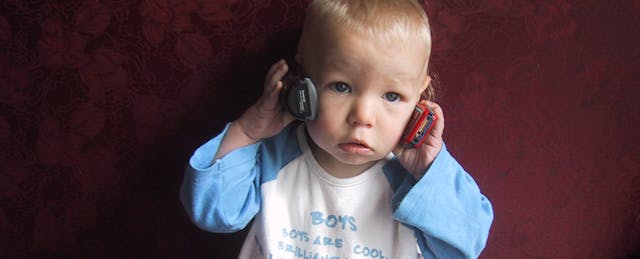Minecraft has been widely celebrated for its educational value. (Common Sense Media gives the game five out of five books, the highest rating of learning potential.) Yet according to the latest research, only 4% of parents nationwide consider it to be “very educational.” So why the disconnect? Are parents biased against video games? Do they just have a narrower view of what makes media educational? Or is it something else?
Last Friday, educational and children’s media professionals had a chance to parse these and other findings from the Joan Ganz Cooney Center’s newest report, Learning at Home: Families’ Educational Media Use in America. Author Victoria Rideout and her team analyzed survey results from over 1,500 parents of 2-10 year-olds (including 290 Black parents and 682 Hispanic-Latino parents) to gain further insights into children’s use of educational media in the home. According to the report, “it is the first study we know of to attempt to quantify, on a national level, how much of children’s media time is devoted to educational content--platform by platform, age by age.”
The good news is that children are, in fact, consuming a fair amount of educational media. Forty-four percent of children’s screen media was rated as educational by their parents, and 80% of children were weekly users. Furthermore, most parents responded that educational media use had directly contributed to their child’s learning.
The challenging (yet not surprising) news is that there is a significant drop in the proportion of educational media use after children reach the age of four (78% of 2-4 year-olds’ media use is educational, compared with 27% of 8-10 year-olds’). Additionally, parents reported that their children weren’t learning as much about science as they were about other subjects. And for the most part, Hispanic-Latino parents were the least likely to report that their children had learned from educational media.
As part of the report’s rollout, the Cooney Center brought industry leaders together at the McGraw-Hill company headquarters in New York to discuss how the results might impact their work. The event featured presentations from Rideout, FCC Commissioner Jessica Roseworcel, and two moderated discussions with a diverse group of “provocateurs” who discussed questions around mobile device use, content for older children, parent and teacher involvement, policy implications, and the differences in educational media use among low-income and minority families.
As the day progressed, a divide could be perceived between those who felt that children’s media professionals should disrupt traditional education (with its standardized math and reading tests as the indicator of student achievement), and those willing to work within the system to push children towards more accepted measures of success. However, everyone in the room seemed to agree that the report was a valuable starting point, and by the end they collectively created a list of opportunities for research and action steps (including large-scale initiatives like the Corporation for Public Broadcasting’s American Graduate Day and the Clinton Foundation’s Too Small to Fail).
When asked what his biggest takeaway from the day’s events were, Sesame Street CEO Mel Ming replied, “That we can be partners with Latino-Hispanic communities in determining the best images that their children can get. [We can] motivate, inspire, and have them learn and become the citizens that they want to become, not the ones that we want them to be. That’s what we’re going to do.” Ed Greene, Senior Director of Educational Outreach and Partnerships at the Hispanic Information and Telecommunications Network’s Early Learning Collaborative, echoed Ming’s sentiments, adding, “It’s really exciting to think about providing experiences for families who bring more than one language to the table, because the bottom line is if we develop quality materials to help meet that need, we’re going to improve education in general.”
PlayCollective’s PlayVangelist, David Kleeman, noted that “a lot of parents don’t feel equipped or empowered to make [choices about children’s media] by themselves.” He suggested building hybrid organizations of websites that review content, like Children’s Technology Review and Common Sense Media, with those that are more oriented towards providing information to parents about child development, such as Mind in the Making and the Ounce of Prevention Fund.
Shelley Pasnik, Director of the Center for Children and Technology at the Education Development Center, may have said it best: “I think it’s important to look across different demographic groups…It makes me hungry to dive in and really get some portraits of what families are doing in their individual homes. We can make all sorts of assumptions about media use…but when it gets really fascinating is when you get into the details of families’ relationships with one another, not just with the technology. That would be really exciting to see as a next step.”
Fortunately for Pasnik and her colleagues, the Cooney Center already has plans for several follow-up reports.


